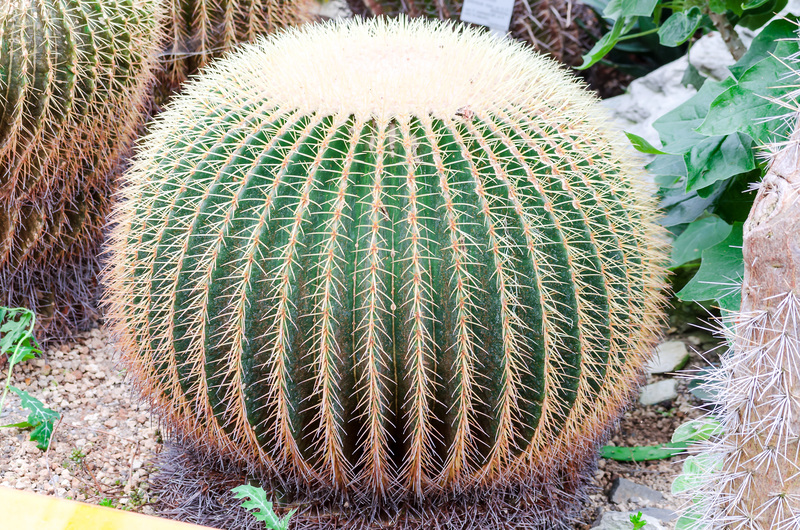The Beginner's Guide to Achieving a Flawless Lawn
A lush, evenly green, and perfectly maintained lawn is the dream of homeowners everywhere. Not only does a flawless lawn boost your property's curb appeal, but it also creates an inviting space for family and friends to relax and play. However, achieving that picture-perfect turf isn't just about mowing weekly--it takes the right blend of knowledge, technique, and dedication.
Whether you're just starting out or struggling to improve your grass, this comprehensive beginner's guide will take you step-by-step through everything you need to know to create and maintain the lawn of your dreams. From soil preparation to seasonal care, we'll break down the secrets of getting a pristine lawn and keeping it that way year-round.
Why a Perfect Lawn Matters
- Enhances Home Value: A well-maintained lawn increases your home's visual appeal and resale value.
- Promotes Outdoor Living: A healthy, thick lawn is safe and fun for children and pets.
- Environmental Benefits: Lawns help in cooling the environment, reducing erosion, and boosting oxygen production.
- Pride of Ownership: There's personal satisfaction in nurturing and displaying a flawless yard.

Understanding Your Lawn's Basics
Know Your Grass Type
Not all lawns are created equal. The key to a beautiful yard is selecting the right grass species for your region and climate. Common types include:
- Cool-season grasses: Such as Kentucky bluegrass, fescue, and ryegrass. Ideal for northern climates.
- Warm-season grasses: Like Bermuda, Zoysia, and St. Augustine. Thrive in southern locations.
Tip: Unsure which type you have? Examine blade shape, growth patterns, or consult a local extension office.
Understanding Your Soil
Soil quality underpins every immaculate lawn. Conducting a simple soil test is essential--it reveals your soil's:
- pH level
- Nutrient content (nitrogen, phosphorus, potassium)
- Texture (sand, silt, clay)
Pro-Tip: Fixing soil issues before attempting to grow your lawn ensures long-lasting success.
Step-by-Step Guide to Achieving a Flawless Lawn
1. Prepare Your Lawn Area
Preparation is the foundation of any thriving lawn. Follow these steps for the best start:
- Clear Debris: Remove rocks, weeds, and old grass to give your new lawn a fresh canvas.
- Test and Amend Soil: Adjust pH (add lime to raise, sulfur to lower), and mix in organic matter if needed.
- Level the Site: Use a rake or garden roller to smooth out bumps and fill low spots. This prevents future water pooling and mowing issues.
2. Choose the Right Seeding Option
Depending on your goals and budget, you may opt for one of the following:
- Seed: Cost-effective, allows for a broader choice of grass types. Best sown in spring or fall.
- Sod: Instant gratification; provides a mature, weed-free look quickly.
- Sprigs or Plugs: Good for certain warm-season grasses. Slower establishment, but effective for patching.
Each method has pros and cons, but all can deliver a spotless lawn when done properly.
3. Water Wisely
Proper watering is crucial in developing and sustaining a perfectly healthy lawn:
- New Lawns: Keep seeds or sod moist (not soggy) until roots establish.
- Established Lawns: Aim for about 1 inch of water per week, preferably in the early morning.
- Avoid Frequent, Shallow Watering: Deep, infrequent watering encourages deep root growth and drought resistance.
4. Mow for Perfection
Mowing isn't just aesthetic: it's vital for health of your grass. Follow these best practices:
- Set the Mower Height Correctly: Never remove more than 1/3 of the grass blade at a time.
- Keep Blades Sharp: Dull blades tear and stress grass, leaving brown tips.
- Vary the Mowing Pattern: Changing direction prevents soil compaction and ruts.
Remember: taller grass develops deeper roots and shades out weeds, improving your lawn's appearance.
5. Fertilize Thoughtfully
Feeding your grass at the right time and rate strengthens it against disease and weeds:
- Use a Slow-Release Fertilizer: This ensures a steady supply of nutrients.
- Follow Recommendations: Apply fertilizer according to your soil test and grass species.
- Don't Overdo It: Excess fertilizer can burn grass and pollute groundwater.
6. Control Weeds and Pests
A weed-free, pest-protected lawn is essential for flawless results:
- Pre-emergent Herbicides: Stops weeds before they start. Apply in early spring.
- Manual Removal: Hand-pull weeds that appear, especially before they seed.
- Manage Pests: Watch for signs of grubs or insects. Use targeted, environmentally safe treatments only as needed.
7. Aerate and Overseed Regularly
Aeration alleviates compaction, improves water and nutrient flow, and enhances root growth. Overseeding fills in thin spots and boosts lawn density. The best time for both is during your grass's peak growing season.
- Core Aerators: Remove small soil plugs for maximum benefit.
- Choose Quality Seed: Use a seed mix that matches your existing turf for seamless results.
Seasonal Lawn Care for a Flawless Appearance
Spring Lawn Care Tips
- Dethatch: Remove built-up dead material that blocks sunlight and air.
- Apply Pre-emergent: Prevent annual weeds before they sprout.
- Fertilize: Give the lawn a gentle boost as it starts to green up.
Summer Lawn Care Tips
- Water Consistently: Lawns need more moisture in hot weather. Water early in the day.
- Raise the Mower: Taller grass helps shade roots and conserve moisture.
- Spot-Treat Weeds: Target only active problem areas to avoid damaging healthy turf.
Fall Lawn Care Tips
- Aerate and Overseed: Fall is the ideal time for these crucial tasks.
- Fertilize for Winter: Promote deep root growth as grass heads into dormancy.
- Clear Leaves: Prevent smothering by raking or using a mulching mower.
Winter Lawn Care Tips
- Limit Traffic: Dormant grass is more susceptible to damage.
- Prepare Early: Sharpen and service tools ahead of spring.
- Remove Debris: Keep lawn clear of branches, toys, and leaves to avoid fungal problems.
Common Flawless Lawn Problems and Solutions
- Bare Spots: Overseed and keep moist. Check for underlying pests or soil compaction.
- Yellowing Grass: Caused by drought, nutrient deficiency, or disease. Test soil, adjust watering, and address fungal issues.
- Weed Infestations: Maintain a thick, healthy turf and use pre-emergent controls.
- Uneven Growth: Level soil, address shade or drainage issues, and ensure consistent mowing.
Advanced Tips for a Pristine Lawn
- Mulch Grass Clippings: Returning nitrogen to the soil and reducing the need for fertilizer.
- Edge Flower Beds: Keep lawn lines sharp and prevent grass encroachment.
- Install an Irrigation System: Automate watering for consistent results.
- Use Organic Lawn Care Methods: Reduce chemical use, benefiting pets and pollinators.

Frequently Asked Questions
How often should I water my lawn?
Water deeply once or twice a week, providing about 1 inch of water total. Adjust for rainfall and drought conditions.
What is the best mowing schedule?
Mow regularly based on grass growth. During peak growing seasons, once every 5-7 days is typical. Never remove more than 1/3 of the blade height.
How do I get rid of tough weeds?
Combine pre-emergent and post-emergent herbicides with good cultural practices. Manual removal and maintaining thick turf is the best long-term strategy.
Can I overseed in summer?
Overseeding during hot, dry months is risky. Wait for fall or spring, when temperatures are cooler and rainfall is more predictable.
Your Path to a Flawless Lawn Starts Here
Transforming your yard into a flourishing, green oasis might seem daunting at first, but with a clear plan and diligent care, achieving a flawless lawn is within the reach of every beginner. By understanding your soil and grass type, preparing properly, following a smart maintenance routine, and responding quickly to problems, you'll enjoy healthier turf, fewer weeds, and year-round beauty.
Remember, the secret to a perfect lawn is consistency: a little effort each week saves you from bigger problems down the line. Armed with this beginner's guide, you're well on your way to being the envy of your neighborhood!
- Be patient: Results come with time and care.
- Stay informed: Read, watch, or ask for advice whenever needed.
- Enjoy your lawn! After all your effort, make sure to relax and take pride in your flawless outdoor space.